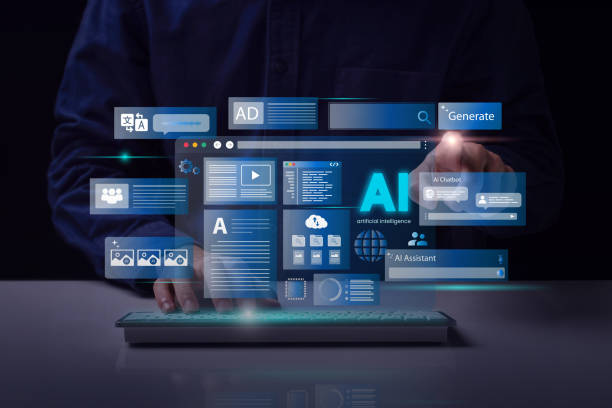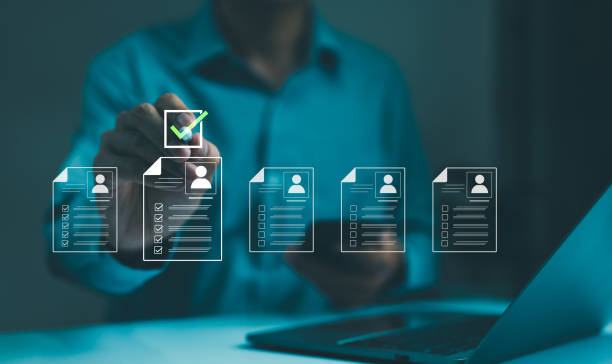What is Internal SEO (On-Page SEO) and Why Does it Matter?
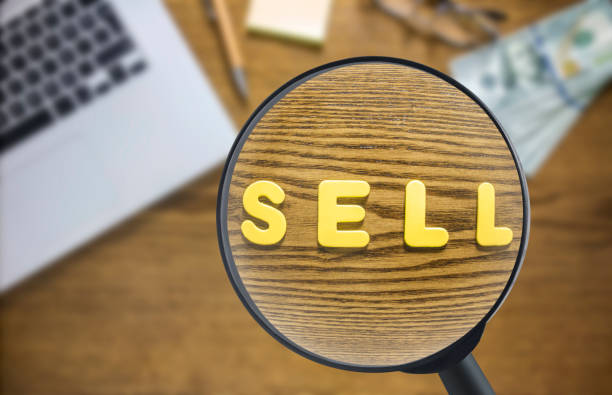
#Internal_SEO (On-Page SEO) is a set of actions taken within your website to improve your site’s ranking in Google search results and other search engines.
These actions include content optimization, the use of appropriate keywords, improving site structure, and internal linking.
The importance of internal SEO is that it helps search engines better understand your site’s content and display it to users looking for relevant information.
A site with strong internal SEO is more likely to attract organic traffic and convert visitors into customers.
In fact, internal SEO is the foundation of a successful SEO strategy, and without it, other efforts in the field of Off-Page SEO will not achieve the desired results.
Internal SEO also directly affects User Experience.
A site with a well-organized structure and high-quality content is more attractive to users and they spend more time on it.
This increases Engagement Rate and decreases Bounce Rate, both of which are important factors in Google’s site ranking.
In today’s competitive world, #optimizing your website for search engines is a necessity, and internal SEO plays a key role in this process.
By taking the right steps in the field of internal SEO, you can improve your site’s ranking, attract more traffic, and ultimately achieve your business goals.
Internal SEO ensures that high-quality content is produced.
Tired of losing customers due to poor e-commerce website design? With Rasaweb, solve this problem forever!
✅ Increase sales and visitor-to-customer conversion rate
✅ Smooth and attractive user experience for your customers⚡ Get free consultation
Keyword Research and Choosing the Best Ones
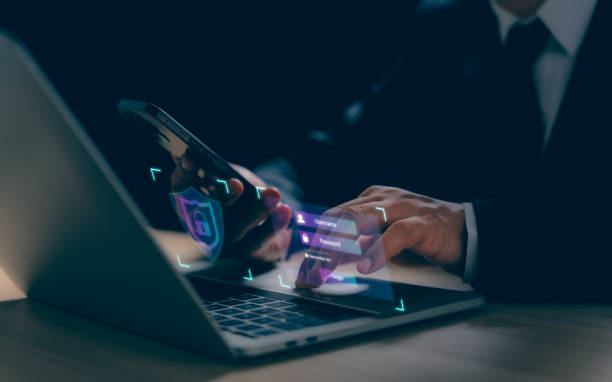
Keyword Research is the first step in any internal SEO strategy.
The goal of this stage is to find the words that users use to search for your products or services in search engines.
These words should be relevant to your business, highly searched, and have low competition.
There are several tools available for keyword research, including Google Keyword Planner, Ahrefs, SEMrush, and Moz Keyword Explorer.
Using these tools, you can check the search volume, competition level, and suggestions related to different keywords.
After collecting a list of keywords, you need to prioritize them.
Keywords that have a higher search volume and are more relevant to your business should be prioritized.
You should also pay attention to the level of competition for keywords.
Keywords with high competition may be more difficult to rank high in search results.
Therefore, it is better to focus on keywords that have less competition and a higher probability of ranking.
The use of keywords in the site’s content should be done naturally and in principle.
Avoid excessive use of keywords (Keyword Stuffing), as this can lead to your site being penalized by Google.
Instead, try to use keywords intelligently in titles, meta descriptions, body text, and image tags.
Internal SEO starts with choosing the right keywords.
Optimizing Titles and Meta Descriptions
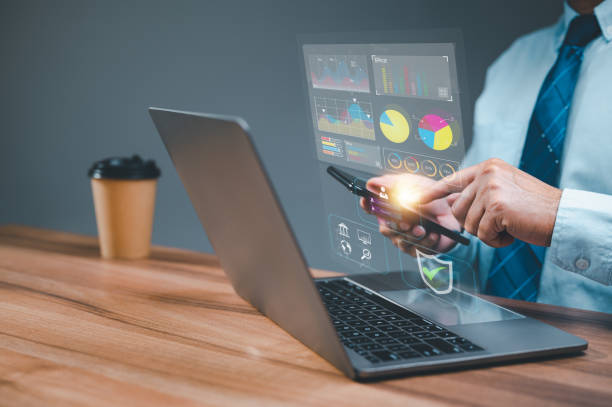
Title Tags & Meta Descriptions are important elements in internal SEO that are displayed in search results.
Titles should be concise, attractive, and contain the page’s main keyword.
The length of titles should be between 50 and 60 characters to be fully displayed in search results.
Meta descriptions should also provide a summary of the page’s content and encourage users to click on your site’s link.
The length of meta descriptions should be between 150 and 160 characters.
These elements should be optimized uniquely for each page of the site.
Titles and meta descriptions are not only important for search engines, but also for users.
An attractive title and an informative meta description can increase your site’s Click-Through Rate and attract more traffic to your site.
Therefore, in writing titles and meta descriptions, you should pay attention to both SEO and attracting users.
Here is a sample table to display sample meta titles for site pages:
| Page | Meta Title (Recommended) | Meta Description (Recommended) |
|---|---|---|
| Homepage | Buy Mobiles Online | Best Prices at [Site Name] | [Site Name] Online Store, Offering the Latest Mobile Models at the Best Prices and Fast Shipping Throughout Iran. |
| Mobile Category | Mobile Price List | Buy All Kinds of Mobile Phones from Reputable Brands | Various mobile phones from Samsung, Apple, Xiaomi and Huawei brands with original warranty and reasonable prices in the [Site Name] store. |
| Product Page (Example: iPhone 13) | Buy iPhone 13 | Price and Specifications of iPhone 13 – [Site Name] | Buy iPhone 13 online at the best price and a valid warranty. Check specifications, prices, and online purchase of iPhone 13 at [Site Name]. |
Appropriate internal SEO can increase your click-through rate.
Optimizing Page Content
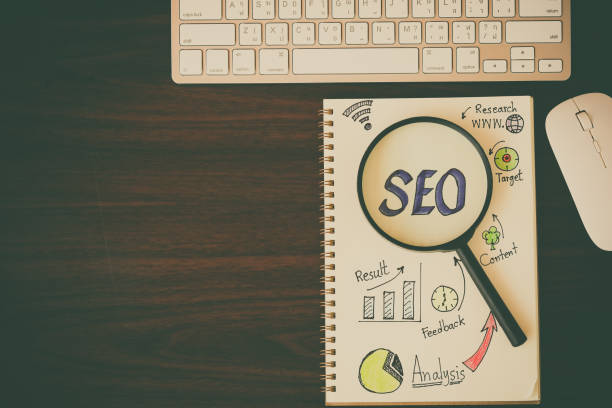
Page Content is the beating heart of every website.
High-quality, original content that is relevant to users’ needs plays an important role in attracting organic traffic and increasing the site’s ranking in search results.
Page content must be fully optimized so that search engines can understand it correctly.
This optimization includes the use of appropriate keywords, proper content structuring, the use of relevant images and videos, and internal and external linking.
Proper content structuring means using appropriate titles and subtitles (H1, H2, H3, …) to divide the content and create a logical flow.
This helps users to easily find the content they want and spend more time on your site.
Also, using relevant images and videos can make your content more attractive and interactive.
Internal Linking means creating links between different pages of your site.
This helps search engines better understand your site’s structure and identify more important pages.
External Linking also means linking to reputable sites that are relevant to your content.
This can increase the credibility of your site and improve its ranking in search results.
Internal SEO requires unique content.
Did you know that a weak company website takes away a lot of opportunities from you every day? Solve this problem forever by designing a professional company website with Rasaweb!
✅ Create a powerful and reliable image of your brand
✅ Targeted attraction of new customers and increased sales
⚡ [Get a free website design consultation]
Optimizing Images
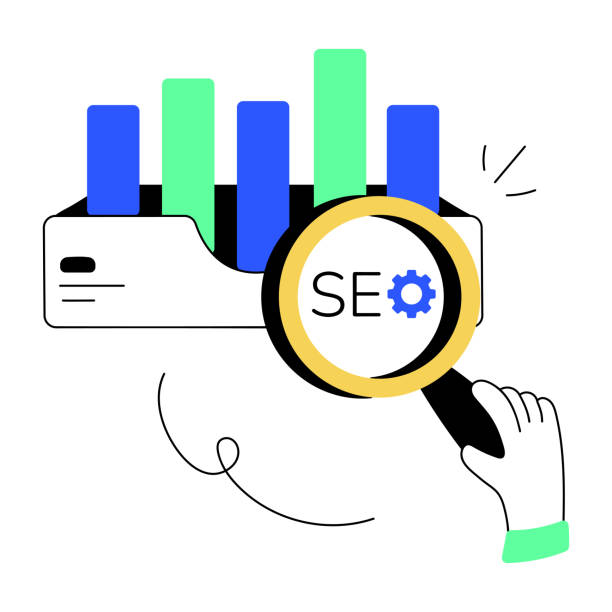
Images play an important role in the visual appeal and user experience of the website.
But unoptimized images can slow down the site’s loading speed and negatively affect the site’s SEO.
Image optimization includes image compression, the use of appropriate formats (such as JPEG and PNG), choosing appropriate file names, and using the Alt tag to describe images.
Image compression means reducing the file size of images without reducing their quality.
This can significantly increase the site’s loading speed.
Using the right formats is also important.
The JPEG format is suitable for images with many colors (such as photos), while the PNG format is suitable for images with few colors and transparency (such as logos).
Choosing appropriate file names also helps search engines understand the content of images.
File names should be relevant to the content of the image and include appropriate keywords.
The Alt tag is also used to describe images to search engines and users who cannot see the images.
The Alt tag should be concise, accurate, and contain relevant keywords.
Internal SEO can dramatically increase your site’s ranking.
Optimizing URLs
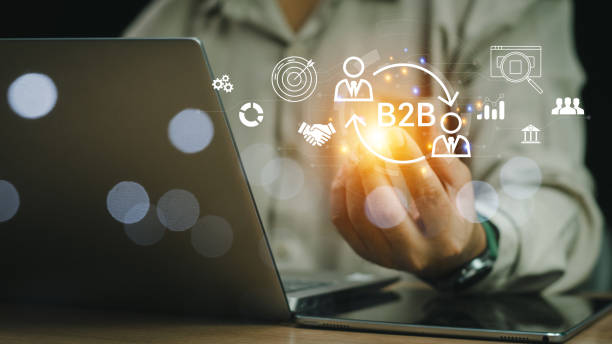
URLs (Uniform Resource Locator) play an important role in SEO and user experience.
URLs should be short, descriptive, and contain relevant keywords.
Avoid using unnecessary characters and numbers in URLs.
URLs should have a logical and hierarchical structure so that users and search engines can easily understand your site’s structure.
URLs should be separated by hyphens (-).
Avoid using underscores (_) in URLs, as search engines may consider them as a single word.
Also, URLs should be written in lowercase letters to avoid potential problems.
For example, instead of using a non-descriptive URL like `example.com/p=123`, use a descriptive URL like `example.com/blog/seo-internal`.
This URL is more understandable for both users and search engines and increases the likelihood of clicking on it.
Proper internal SEO helps improve your site’s ranking.
Improving Site Loading Speed
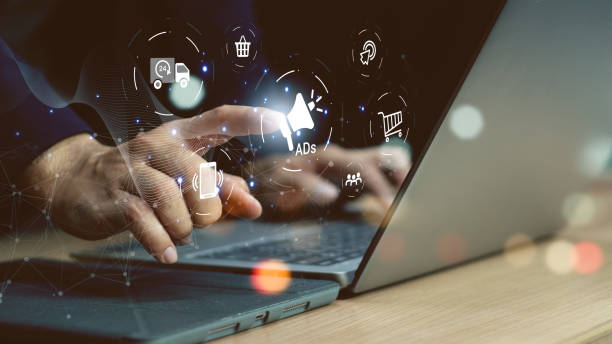
Page Load Speed is one of the important factors in Google’s site ranking.
Users who experience slow loading speeds are more likely to leave the site and visit other sites.
Site loading speed should be constantly monitored and optimized.
There are several tools available to measure site loading speed, including Google PageSpeed Insights, GTmetrix, and WebPageTest.
There are several ways to improve site loading speed, including image compression, using a CDN (Content Delivery Network), enabling browser caching, reducing the size of CSS and JavaScript files, and optimizing site code.
A CDN is a content distribution network that stores your site’s content on different servers around the world.
This allows users to receive content from the server closest to them and increases the site’s loading speed.
| Factor | Description | Improvement Solution |
|---|---|---|
| Image Size | Large images slow down loading. | Compress images with tools like TinyPNG or ImageOptim. |
| CSS and JavaScript Files | Large CSS and JavaScript files increase loading time. | Reduce file size (Minification) and combine files (Concatenation). |
| Browser Cache | Not using browser cache causes site resources to be loaded from scratch each time. | Enable browser cache to store site resources in the user’s browser. |
| Hosting | Choosing an inappropriate hosting with low speed. | Choose a high-quality and fast hosting. |
Internal SEO can increase your loading speed.
Internal Linking

Internal Linking means creating links between different pages of your site.
This helps search engines better understand your site’s structure and identify more important pages.
Internal linking also helps users to easily navigate your site and find the content they want.
Internal linking should be done strategically and using relevant keywords.
When linking to other pages on your site, use appropriate Anchor Text.
The link text should be relevant to the content of the page you are linking to.
Avoid using general link texts like “Click here”.
Instead, use descriptive link texts such as “Comprehensive Guide to Internal SEO”.
Internal linking should be done regularly and continuously.
Each page of your site should link to other pages of the site, and each important page should receive links from other pages of the site.
This will ensure that your site has a well-organized and coherent structure, and that search engines can easily crawl and index it. Internal SEO requires precise linking.
Did you know that your company website is the first point of contact for 75% of potential customers?
Your website is the face of your brand. With Rasaweb’s professional company website design services, create an online presence that earns customer trust.
✅ Create a professional and lasting image of your brand
✅ Attract target customers and increase online credibility
⚡ Get a free consultation from Rasaweb experts!
Optimizing for Mobile
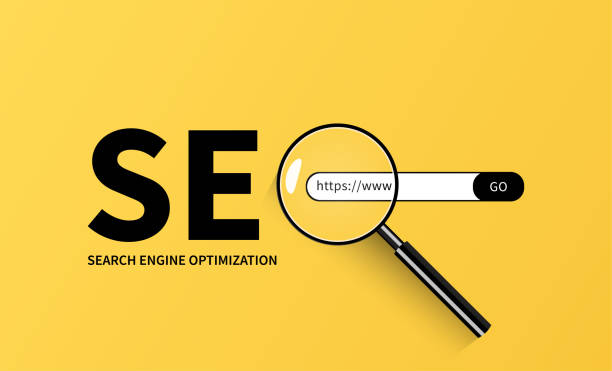
Mobile Optimization is a necessity in today’s world.
More than half of website traffic comes from mobile devices, and Google prioritizes sites that are optimized for mobile.
Mobile optimization includes Responsive Design, high loading speed, the use of legible fonts, and creating a suitable user experience on mobile devices.
Responsive Design means designing a site that automatically adapts to the screen size of different devices (such as mobile, tablet, and desktop).
This ensures that users have a good user experience on any device they visit your site from.
High loading speed is also very important for mobile users, as they usually use the Internet with lower speeds.
Using legible fonts and creating a good user experience can also help improve your site’s ranking in search results.
Make sure your site is optimized for mobile so you don’t lose traffic and rankings. Internal SEO is mandatory for mobile sites.
Continuous Monitoring and Improvement
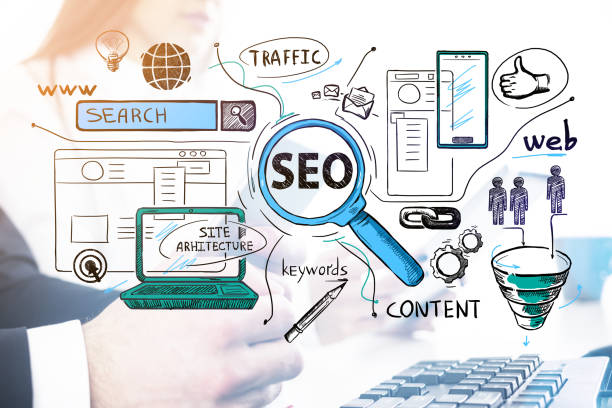
Internal SEO is a continuous process and needs monitoring and improvement.
You should regularly check your site’s performance in search results and improve your SEO strategy based on the data.
There are several tools available to monitor your site’s performance in search results, including Google Analytics, Google Search Console, and Ahrefs.
Using these tools, you can check site traffic, keyword rankings, click-through rates, and other important metrics.
Based on the data, you can identify the weaknesses of your site and take action to improve them.
For example, if you notice that your site’s loading speed is low, you can increase it by compressing images and optimizing the site’s code.
Or if you notice that the ranking of certain keywords is low, you can improve their ranking by optimizing the content of related pages.
Internal SEO (On-Page SEO) is a repeatable process.
You should also pay attention to changes in Google’s algorithms and update your SEO strategy based on them.
Google is constantly changing its algorithms, and sites that are not compatible with these changes may lose their ranking in search results.
With continuous monitoring and improvement, you can ensure that your site is always in the best SEO condition and maintain your traffic and rankings.
Internal SEO is a long-term investment and must be continuously improved to achieve the best results.
Internal SEO will be possible with accurate content analysis.
Continuous optimization will bring you internal SEO.
Good internal SEO has impressive results.
Frequently Asked Questions
| Row | Question | Answer |
|---|---|---|
| 1 | What is Internal SEO (On-Page SEO)? | Internal SEO refers to a set of actions taken within the website (on its pages) to improve the site’s ranking in search engine results. This includes optimizing content, site structure, and HTML codes. |
| 2 | Why is Internal SEO important? | Internal SEO helps search engines better understand the content of the page and determine whether that page is relevant and valuable for user searches. This better understanding leads to higher rankings. |
| 3 | What is the first and most important step in internal SEO? | Keyword Research is the most important initial step. By finding the right keywords, you can produce targeted and relevant content to meet user needs. |
| 4 | What is the role of the Title Tag in internal SEO? | The title tag is one of the most important ranking factors and should include the main keyword. This tag is displayed in search results as the page title and affects the click-through rate (CTR). |
| 5 | What is the importance of Meta Description? | Meta Description does not directly affect ranking, but by providing an attractive summary of the page’s content in search results, it can encourage users to click and therefore increase the click-through rate (CTR). |
| 6 | Why is the use of Headings (H1, H2, etc.) important in content? | Headings help to structure content and improve readability for users and search engine crawlers. Using keywords in headings also helps the search engine better understand the topic. |
| 7 | What does Image Optimization in internal SEO include? | It includes compressing images to reduce size, using descriptive and relevant file names, and filling the Alt tag (alternative text) with relevant keywords to help search engines understand the content of the image. |
| 8 | What is meant by Internal Linking in internal SEO? | Internal Linking refers to creating links between different pages of a website. This helps to distribute page equity, improve user experience, and help search engine crawlers discover new pages. |
| 9 | Why is Page Speed important for internal SEO? | Page loading speed is a direct ranking factor and strongly affects user experience. Slow pages can increase Bounce Rate and reduce user engagement. |
| 10 | What role does quality content play in internal SEO? | Quality content, which is comprehensive, unique, and valuable to the user, is the core of internal SEO. This content not only attracts and retains users, but also sends positive signals to search engines and helps to improve ranking. |
And other services of Rasa Web Advertising Agency in the field of advertising
Smart Conversion Rate Optimization: A creative platform to improve website traffic increase by customizing the user experience.
Intelligent Website Development: Designed for businesses looking to engage users through dedicated programming.
Intelligent Data Analysis: A dedicated service for growing customer acquisition based on attractive user interface design.
Intelligent Digital Advertising: A combination of creativity and technology to analyze customer behavior through dedicated programming.
Intelligent Brand Identity: Transform customer acquisition with the help of user experience customization.
And more than a hundred other services in the field of internet advertising, advertising consulting and organizational solutions
Internet Advertising | Advertising Strategy | Advertorial Report
Resources
Google SEO Starter Guide
,A Comprehensive Guide to Internal SEO from Ahrefs
,On-Page Optimization from Moz
,Internal SEO Guide from Yoast
? For a powerful presence in the digital world and to promote your business, Rasaweb Afarin, a leading digital marketing agency, is with you. With our comprehensive services, including SEO-optimized website design, we will take your business to the top.
📍 Tehran, Mirdamad Street, next to the Central Bank, South Kazerun Alley, Ramin Alley No. 6


